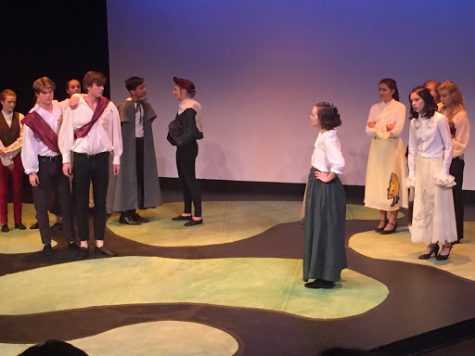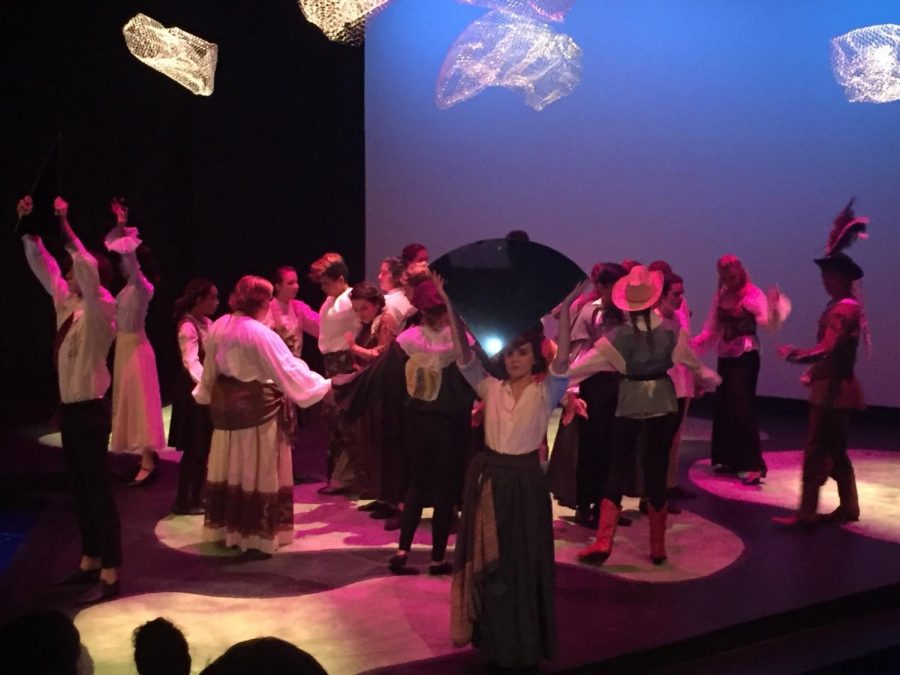Shakespeare’s Play Resonates Again
November 15, 2018
On Friday, Oct. 17, I saw the Albuquerque Academy production of William Shakespeare’s Much Ado About Nothing. The play debuted at the Little Theater and was directed by performing arts faculty member Laurie Thomas. I was impressed with the production and was instantly engrossed by the plot, from beginning to end. At first, I thought I would have a problem following the Shakespearean language, but the actors did a great job making it easier to understand. The play was not all leisure, however. “Shakespeare is still work for the audience. It still requires a certain amount of stepping up to the plate on the audience’s part, to really stay with play, characters and the plotline,” Thomas said.
Much Ado About Nothing is set in the Italian town Messina. It tells the comedic tale of a young, handsome man named Claudio, portrayed by Trey Caperton ‘19, who falls in love with the fair maiden, Hero, Samantha Squires ‘19. The two characters then trick a soldier by the name of Benedick, played by Joey Vigil ‘21, into falling in love with a woman named Beatrice, Jayce Ross ‘20. The two men seek to marry their lovers but are interrupted by a sudden turns of events, creating a dramatic and humorous story.
Overall, the performance was mesmerizing. It was fascinating to see comic roles such as cowboys and musicians in a Shakespeare play, and I enjoyed that aspect very much. Beatrice was portrayed beautifully, and Ross captured the true essence of the character.
The play’s props were composed of a multitude of intricate shapes. For instance, to create a visual interpretation of the city of Messina, a blue-netted material hung from the top of the theater, and there were blotches of green carpet distributed across the stage. The multi-colored lighting used in the production—red and blue were common— created a mesmerizing ambience. The music and songs allowed the audience to take a break from Shakespeare’s complex language and to think about the scene that just happened. It reinforced the feelings and situations that the characters found themselves in.
Though generations of actors have played the roles of Beatrice and Benedick, Thomas created a unique interpretation of this popular comedy by adding a contemporary twist. There were no changes of scenery, additions of any characters to the original script, or even changes in language. Instead, the director had a different interpretations of how the characters could be portrayed. Thomas added a Texas twang to the delivery of characters’ lines and cast some characters as cowboys to give the play a more modern atmosphere. Describing the use of cell phones in an effort to connect the modern age to the production, Thomas said, “It is a little fun to feed into drama, to really understand the situation. What is it, in reality? That plays out in social media all the time.” Throughout the production, the characters held mirrors of different shapes and sizes. The props helped support the theme of vanity. These reflected the goal of theatre of “holding the mirror up to human nature,” as Shakespeare wrote in Hamlet. In Much Ado, there is similarly a sense of self-indulgence, and self-preoccupation.
As I watched the play, I asked myself something. For more than 400 years, we have been watching Shakespeare’s plays and reading his work, but why do his stories never get old? Thomas commented, “There are certain artists that have graced this earth with work that continues to speak in their contemporary time when they were creating the work. Even after their death, there is something in the work that continues to resonate.”







